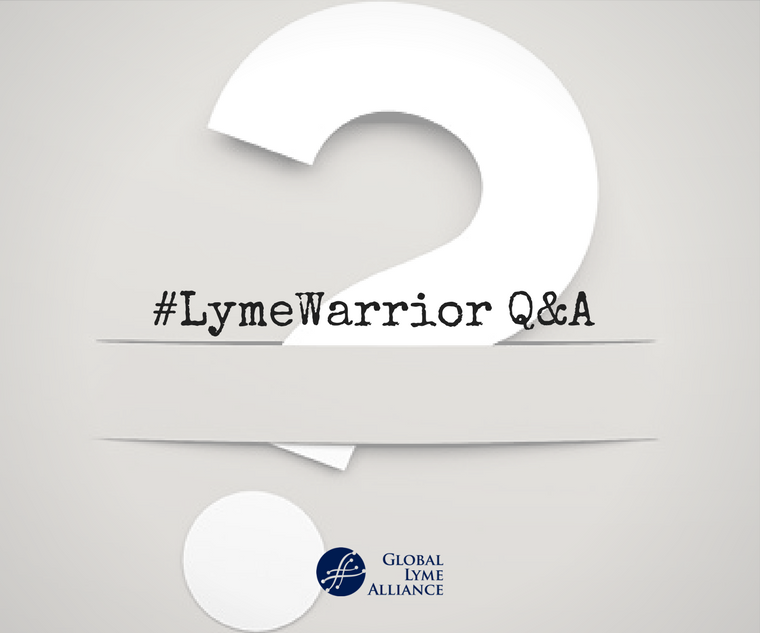
by Jennifer Crystal
Every couple months, Lyme Warrior Jennifer Crystal devotes a column to answering your questions. Here are her answers to questions she is frequently asked.
Do you have a question for Jennifer? Email her at jennifercrystalwriter@gmail.com.
You’ve written about relapsing. How long does it take for a Lyme patient to relapse?
Many Lyme patients continue to feel well after stopping treatment, and my hope for them is that they will never relapse. But if Lyme disease is not fully treated, leftover spirochetes can start replicating, causing the infection to flare up again. While this can happen out of the blue, it is more often triggered by compounding issues such as stress or another acute infection. Stress releases cortisol in the body, which lowers immune function.
When the immune system is compromised, it is less capable of fighting leftover spirochetes. For some people, this happens right away—(usually signaling that they weren’t treated long enough)— while for others it happens months or even years later. If the body doesn’t have other defenses protecting it, such as antibiotics or nutritional and homeopathic supplements, and there is even one spirochete left, that spirochete is free to multiply at any time. For me, it took six months after stopping treatment to relapse. By then, I had moved and started a new job, and was in over my head physically, mentally and emotionally. My doctor said all the stress I was under was like “walking into a minefield of ticks.” Now, I stay on low-dose treatments to keep myself in remission, and I have not relapsed in ten years.
Only you and your Lyme Literate Medical Doctor (LLMD) can decide when you are ready to stop treatment and how you should continue to protect your immune system once you do.
What is the best test for Lyme disease?
Unfortunately, there is not yet an accurate and reliable test for Lyme, but Global Lyme Alliance is supporting research towards one. Current Lyme tests are indirect, meaning they only look for antibodies against the infection, not for the Lyme bacteria itself. It can take the body a while to generate antibodies, causing false-negative tests. The most common test is the two-tiered Western Blot and ELISA test, which is only 50-70% accurate. Some labs like Igenex do more sensitive testing, reading more bands for Lyme on their Western Blot than the standard CDC Western Blot. They also test for two strains of Lyme bacteria, called B. burgdorferi, rather than one. Other tests are the polymerase chain reaction assay (PCR), which detects the DNA of the Lyme bacteria drawn from a joint (usually the cerebrospinal fluid) and the C6-Peptide test (for more information on testing, click here).
Because testing is so inaccurate, both the Centers for Disease Control and Prevention (CDC) and the International Lyme and Associated Diseases Society (ILADS) note the importance of a clinical diagnosis, which can only be done by an LLMD. My tests were CDC-positive for both long and short-term infection, but I also had a thorough clinical assessment by an LLMD.
Do you know if muscle atrophy and nerve damage can be regenerated after Lyme treatment?
This is another question that varies per patient, but I can tell you that I personally was able to heal from both. I had very serious cases of Lyme, Babesia, and Ehrlichia that crossed the blood-brain barrier. A SPECT scan showed lesions on my brain and inflammation that blocked the left side from getting adequate oxygen. My muscles atrophied to a point where my previously rock solid ski legs jiggled like Jell-O.
Recovery was slow and unsteady, and did not happen solely due to antibiotic and antimalarial treatment; it also took a lot of work on my part. I had to really rest my brain while I was going through treatment, not pushing it to watch TV or read when those activities gave me brain fog. I had to learn my limits, pulling myself away from stimulating activities before I became overwhelmed. I still have to enforce limits today. I used to get paroxysmal limb movements—twitching of my nerves and limbs—and while that still happens occasionally when I am overtired, it is far less frequent than it used to be.
I worked assiduously at physical therapy to regain my muscle strength, but not until I had completed enough treatment to really be ready to exercise. Then I started very slowly: thirty seconds on a stationary bike. I worked up to a minute and thirty seconds, only to get a migraine and wind up back in bed for a week. Eventually, over the course of many months at physical therapy and many years on my own, I have improved to a point where I can now spend a morning skiing, paddle boarding, or canoeing. I recently kayaked three miles on the Boston Harbor. I still have to rest after I exercise and am no longer skiing moguls for eight hours a day, but I am also not as young as I once was. Nevertheless, I am happy to report that my rock solid muscles are back.
In addition to medicine and physical therapy, neurofeedback and integrative manual therapy helped me to regain cognitive and physical function. Don’t give up hope!
 Opinions expressed by contributors are their own.
Opinions expressed by contributors are their own.
Jennifer Crystal is a writer and educator in Boston. She is working on a memoir about her journey with chronic tick-borne illness. Contact her at jennifercrystalwriter@gmail.com

GLA
Admin at GLA